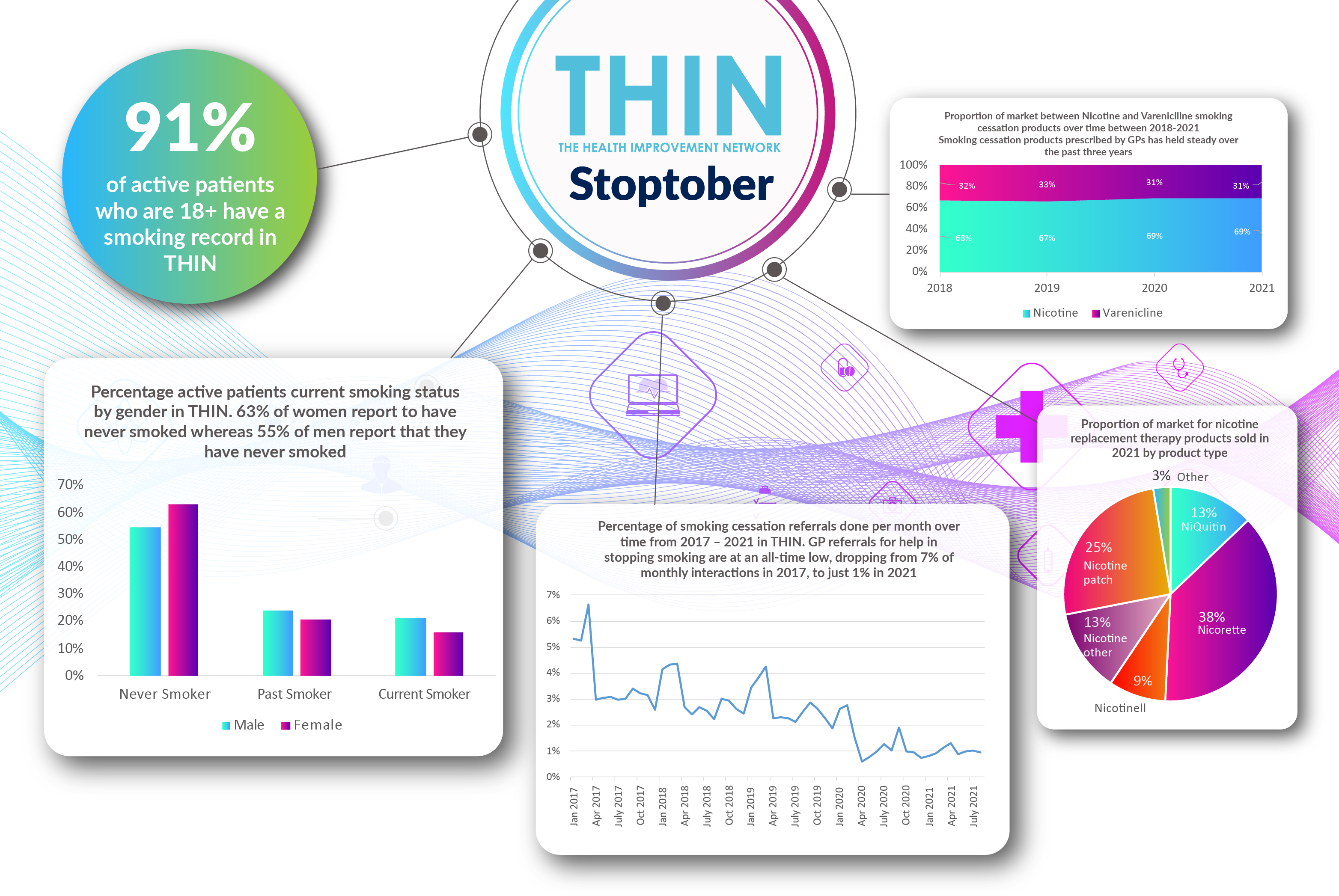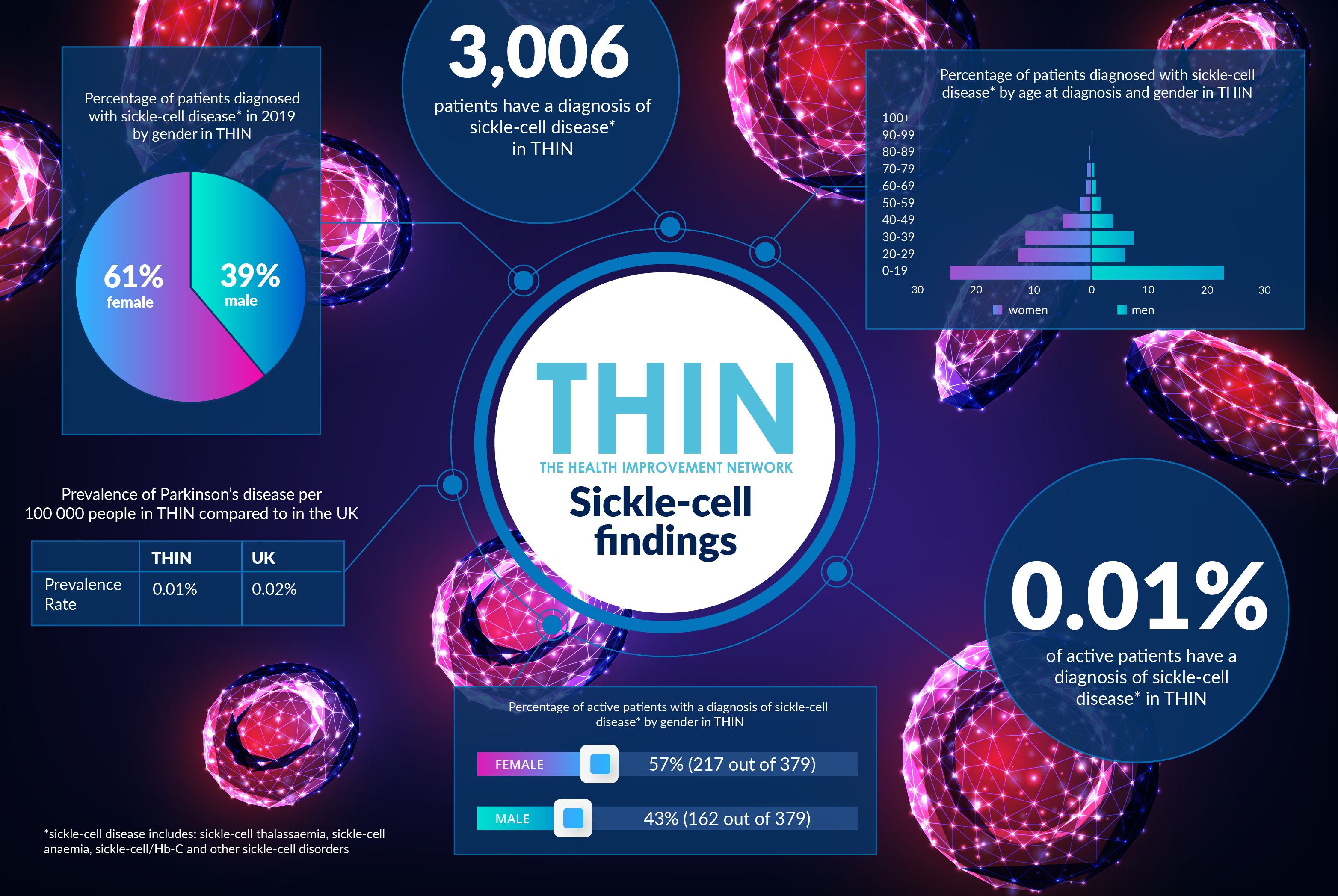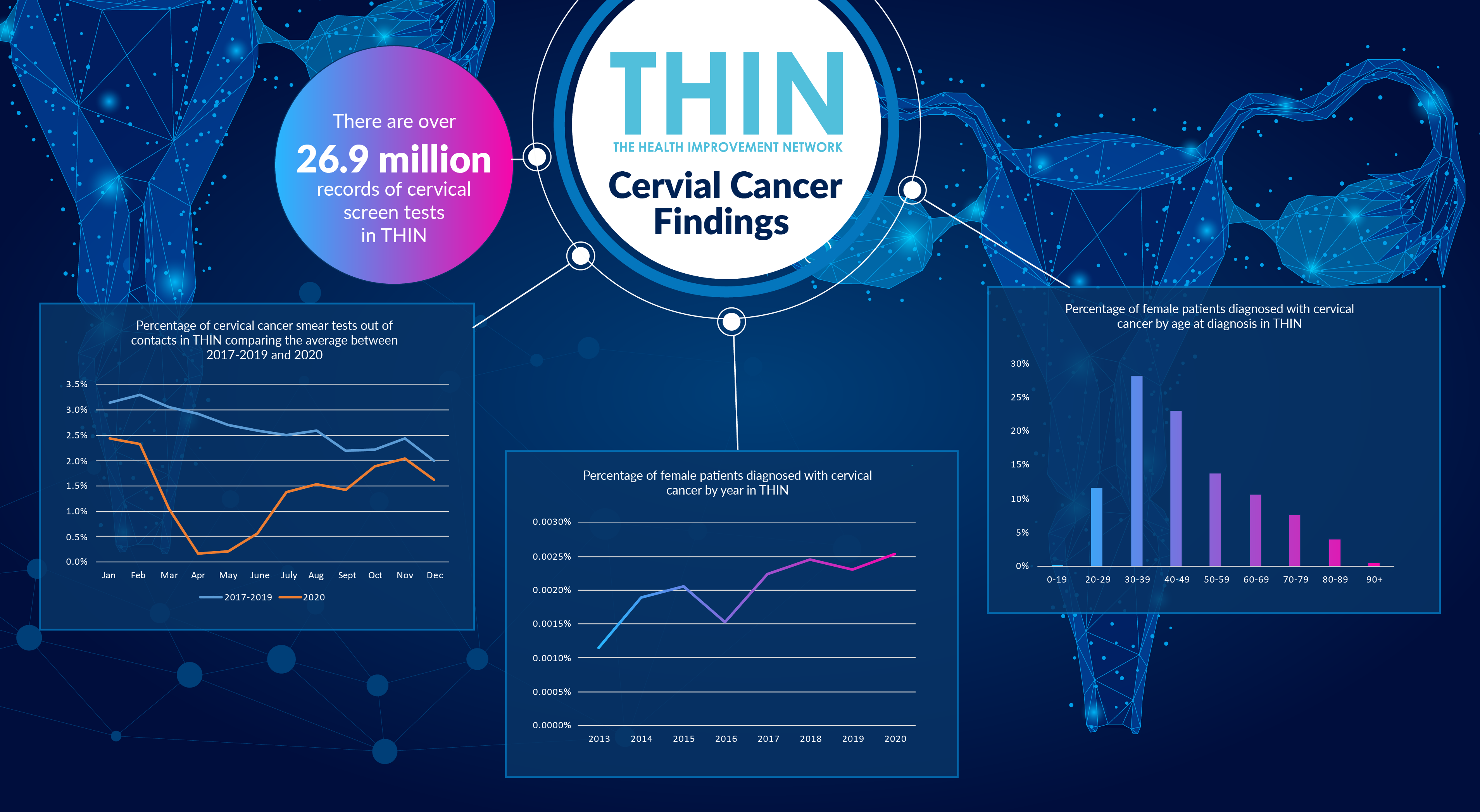Young Generation of Smokers Raises Concerns this Stoptober

2021 marks the 10th anniversary of the annual ‘Stoptober’ smoking cessation campaign which has, to date, encouraged two million people in the UK to attempt to stop smoking. There are many incentives for eliminating cigarettes - from health to wealth; but in the wake of a global respiratory pandemic, the known respiratory disease risks associated with smoking tobacco have reinforced many individuals’ desires to finally give up smoking.
However, there was also an increase in young adults taking up smoking during the first COVD-19 lockdown, creating a new generation of smokers and resulting in static levels of overall numbers throughout the UK population.
Support is key to helping people stop smoking - which is the underpinning objective of the 28 day Stoptober programme. Yet as analysis of The Health Improvement Network (THIN®), a Cegedim database reveals, GP referrals for help in stopping smoking are at an all-time low, dropping from 7% of monthly interactions in 2017, to just 1% in 2021. COVID-19 has halted the year on year decline in the smoking population, creating new trends in behaviour and well-being that we need to urgently understand if campaigns such as Stoptober are to maximise their reach and minimise the impact of smoking of the health of the UK population.
Proven Damage
The harms of tobacco use are well-established. According to the World Health Organization (WHO), tobacco causes eight million deaths every year from cardiovascular diseases, lung disorders, cancers, diabetes, and hypertension. Smoking tobacco is also a known risk factor for severe disease and death from many respiratory infections.
A WHO review also discovered that smoking is associated with more severe illness and an increased risk of death in people who need hospital treatment for Covid-19. A UK study published in January 2021 suggests that current smokers who get coronavirus are twice as likely to attend hospital and tend to report more symptoms than non-smokers – and the latest data is even more troubling: smokers are 60%-80% more likely to be admitted to hospital with Covid-19 and also more likely to die from the disease.
While research from Cancer Research UK confirms the pandemic was a trigger for many smokers to think about attempting to give up tobacco, it also revealed a disturbing response to the pandemic amongst 18 to 34 year olds, with the proportion of smokers rising from 21.5% to 26.8%, with many experts believing the rise has been fuelled by stress. The findings suggest an extra 652,000 young adults took up smoking. Alongside a widespread uplift in alcohol consumption amongst all age groups, the health implications and potential burden on healthcare resources need to be understood.
As lead researcher Dr Sarah Jackson, from University College London, said, "It will be important to keep a close eye on how these increases in smoking and drinking develop over time to ensure appropriate support is made accessible for anyone who needs it."
Achieving Change
This is where longitudinal population studies such as THIN® will play a vital role in monitoring trends in behaviour and providing clinicians with clear insight into patient risks. 91% of active patients who are 18+ have a smoking record in THIN® – 63% of women and 55% of men report to have never smoked. 21% of women and 24% of men class themselves as past smokers; while 16% of women and 21% of men confirm they are current smokers.
Smoking cessation programmes are well established. The Stoptober 28 day challenge is based on the research that an individual managing 28 days smoke free is five times more likely to quit for good. Advice for quitting includes listing reasons for stopping, thinking about triggers and devising strategies to avoid them. Support is also really important – from telling friends and family to joining the Stoptober Facebook group. Exercise and keeping busy are also known solutions to nicotine cravings – while smoking cessation products can also play an important role.
Analysis of THIN® data confirms that the proportion of Nicotine (69%) to Vareniciline (31%) smoking cessation products prescribed by GPs has held steady over the past three years. The most popular nicotine replacement therapy product sold in 2021 to date has been Nicorette (38%), followed by Nicotine patch (25%) and NiQuitin (13%).
Understanding Behaviour
Tracking patient success with smoking cessation will be ever more important given the shifting demographic – products that work well or appeal to the older generation may not work for the new 18 to 34 year old smokers. The Stoptober app helps individual to track their progress – and includes the amount of money saved by not smoking. Using longitudinal population data to map the value of different approaches will both help individual GPs in engaging with patients and support on going strategies at government level to reduce the numbers of individuals smoking across the UK.
As Deborah Arnott, chief executive of health charity ASH, said, "The growing number of young adult smokers is a ticking time bomb, as smoking is an addiction which puts people on a path to premature death and disability which is hard to escape. The government has committed to publish a new Tobacco Control Plan this year, which is welcome. The new figures provide proof, if it were needed, that unless the plan is sufficiently ambitious and well-funded it will not deliver the government's ambition for England to be smoke-free by 2030."



